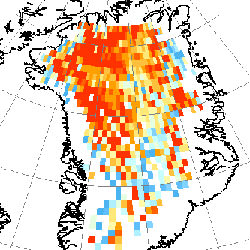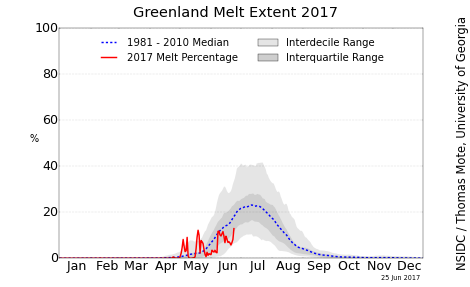Glaciers today, are growing.
During the middle of the 20th century, examination of the maps and photographs from the previous century provided clear evidence that the 150 glaciers known to have existed in the park a hundred years earlier had greatly retreated, and in many cases disappeared altogether.
[50] Repeat photography of the glaciers, such as the pictures taken of
Grinnell Glacier between 1938 and 2009 as shown, help to provide visual confirmation of the extent of glacier retreat.
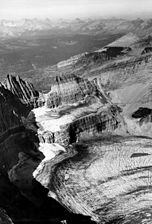
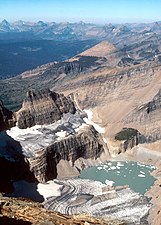

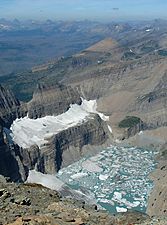
1938 1981 1998 2009
In the 1980s, the
U.S. Geological Survey began a more systematic study of the remaining glaciers, which has continued to the present day. By 2010, 37 glaciers remained, but only 25 of these were considered to be "active glaciers" of at least 25 acres (0.10 km2) in area.
[4][50] If the current warming trend continues, all of the remaining glaciers in the park will be gone by 2030.
[48] This
glacier retreat follows a worldwide pattern that has accelerated even more since 1980. Without a major climatic change in which cooler and moister weather returns and persists, the
mass balance, which is the accumulation rate versus the ablation (melting) rate of glaciers, will continue to be negative and the glaciers have been projected to eventually disappear, leaving behind only barren rock.
[51]
After the end of the Little Ice Age in 1850, the glaciers in the park retreated moderately until the 1910s. Between 1917 and 1941, the retreat rate accelerated and was as high as 330 feet (100 m) per year for some glaciers.
[50] A slight cooling trend from the 1940s until 1979 helped to slow the rate of retreat and, in a few cases, even advanced the glaciers over ten meters. However, during the 1980s, the glaciers in the park began a steady period of loss of glacial ice, which continues as of 2010. In 1850, the glaciers in the region near
Blackfoot and
Jackson Glaciers covered 5,337 acres (21.6 km2), but by 1979, the same region of the park had glacier ice covering only 1,828 acres (7.4 km2). Between 1850 and 1979, 73% of the glacial ice had melted away.
[52] At the time the park was created, Jackson Glacier was part of Blackfoot Glacier, but the two have separated into two glaciers since.
[53]
Glacier National Park (U.S.) - Wikipedia
You consider that evidence of glaciers advancing? LOL









